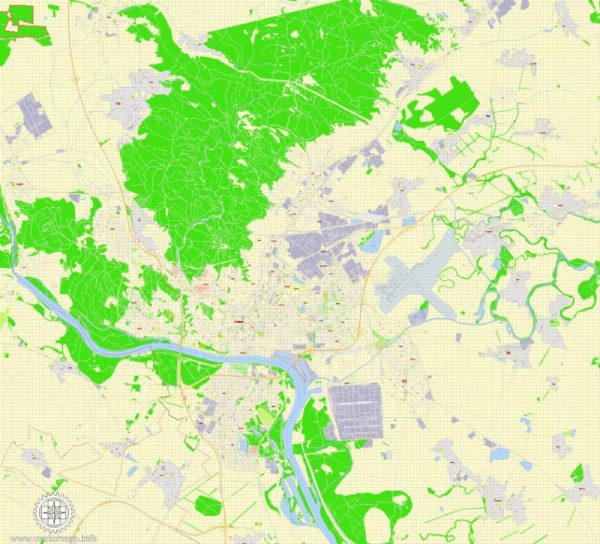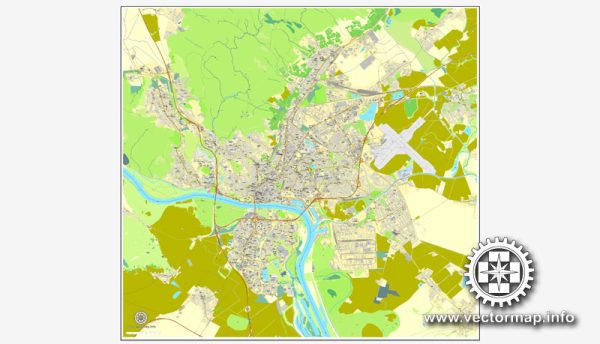A general overview of the economic history of Bratislava, Slovakia.
Vectormap.Net provide you with the most accurate and up-to-date vector maps in Adobe Illustrator, PDF and other formats, designed for editing and printing. Please read the vector map descriptions carefully.
- Historical Background: Bratislava, the capital of Slovakia, has a rich history shaped by its strategic location along the Danube River. Throughout history, the city has been influenced by various rulers, including the Celts, Romans, Hungarians, Austrians, and Czechoslovaks.
- Austro-Hungarian Empire: During the Austro-Hungarian Empire (1867–1918), Bratislava (known as Pressburg in German and Pozsony in Hungarian) was a significant administrative and economic center. The city served as the capital of the Kingdom of Hungary for a brief period during the 18th century.
- First Czechoslovak Republic: After World War I and the collapse of the Austro-Hungarian Empire, Slovakia became part of the newly formed Czechoslovakia. Bratislava, as the capital, played a role in the economic development of the country during the interwar period.
- World War II and Communist Era: World War II and the subsequent communist era had a significant impact on the economy of Bratislava and Slovakia. The economy was centrally planned, with a focus on heavy industry and agriculture. During this time, Bratislava continued to be an important industrial center within Czechoslovakia.
- Post-Communist Transition: With the Velvet Revolution in 1989 and the fall of communism, Slovakia underwent economic reforms to transition from a centrally planned to a market-oriented economy. This period saw the privatization of state-owned enterprises, liberalization of trade, and the implementation of economic restructuring policies.
- Integration into the European Union: Slovakia joined the European Union in 2004, which facilitated further economic development. Access to the EU market and financial assistance contributed to the growth of Bratislava’s economy. The adoption of the euro in 2009 further solidified Slovakia’s economic ties with the European community.
- Current Economic Landscape: Bratislava has become a hub for multinational corporations, particularly in the automotive and electronics industries. Foreign direct investment has played a crucial role in the city’s economic growth. The automotive sector, with companies like Volkswagen and Peugeot-Citroën, has been a major contributor to the region’s economic success.
- Challenges and Opportunities: Despite economic successes, challenges such as regional disparities and the need for continued diversification persist. Efforts to promote innovation, education, and sustainable development are ongoing to ensure long-term economic stability.



 Author: Kirill Shrayber, Ph.D.
Author: Kirill Shrayber, Ph.D.